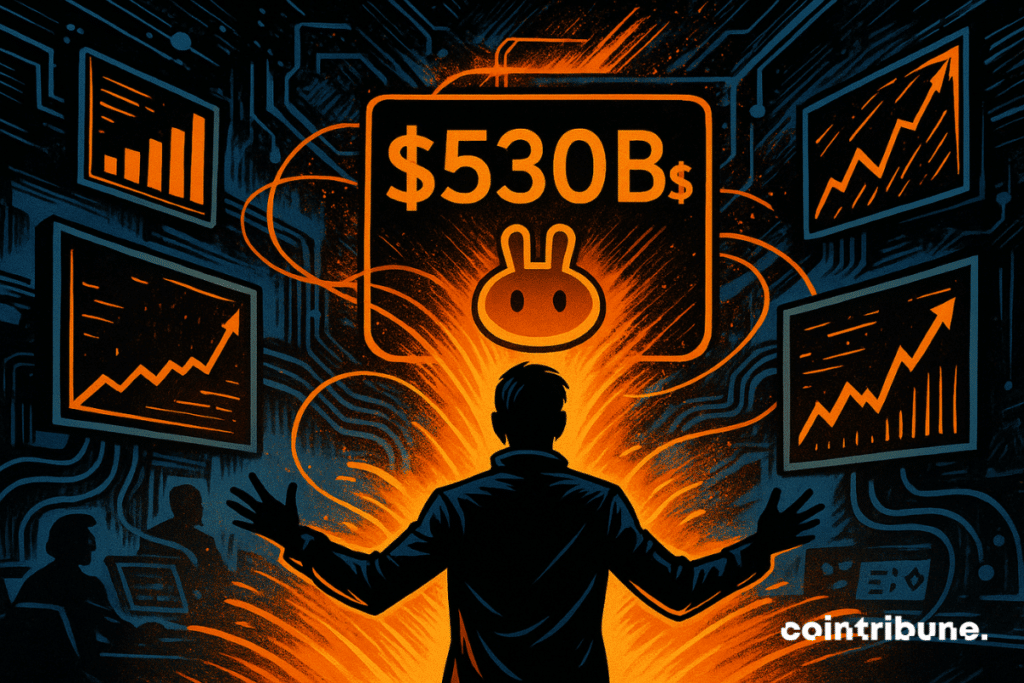PancakeSwap Smashes Records: $530B Quarterly Volume Stuns Crypto Markets
Defi's dark horse leaves Wall Street in the dust.
PancakeSwap just served institutional traders a humble pie—the decentralized exchange's latest numbers would make traditional finance weep into their spreadsheets. With $530 billion in quarterly volume, the platform proves DeFi isn't just surviving bear markets—it's rewriting the rulebook.
Anatomy of a Defi Juggernaut
No investment bankers. No bloated commissions. Just a token-swapping protocol on BNB Chain casually outpacing some national stock exchanges. The secret sauce? A relentless focus on low fees and permissionless access—concepts so foreign to legacy finance they might as well be alien technology.
While traditional exchanges obsess over 'order flow payments' (read: legalized kickbacks), PancakeSwap's automated market maker model keeps stacking blocks. The irony? This 'amateur' platform now handles volumes that would make Goldman Sachs' prime brokerage blush.
The numbers don't lie—and neither do the traders flooding in. One question remains: how long before Wall Street tries to 'disrupt' this innovation by slapping a 300-page compliance manual on it?

In Brief
- PancakeSwap reaches $530 billion in Q2, driven by technical upgrades and product innovations.
- BNB Chain accounts for 96.7% of the volume, Ethereum now weighs only 0.3%.
- The launch on Solana promises fast, cheap swaps targeted for liquidity providers.
- 90% of DeFi is captured by two platforms, creating centralization that deserves serious scrutiny.
PancakeSwap: Record Growth, Abundant Innovations, and Asserted Ambition
The month of June 2025 will be etched in the history of. The platform displayed, an unmatched peak in five years of existence. This represents ancompared to May. For the second quarter, PancakeSwap totals, compared to $211 billion in the first quarter, according to Dune Analytics. A leap that is no coincidence.
The explanation? Adesigned to attract traders and developers. With the, users now enjoy reduced fees, customizable pools via “Hooks”, and new options for liquidity providers. The user experience has been refined like never before.
PancakeSwap Infinity allows the integration of new types of pools without redeploying smart contracts, explained Chef Kids, its manager. For liquidity providers, these features facilitate “more precise capital allocation“.
And the platform did not stop there. On June 11, it launched, enabling. A fluidity that redefines the standards of DEX in crypto.
The Recipe for Success: BNB Chain, Solana, and a Winning Crypto Strategy
What PancakeSwap achieves is a well-calibrated multichain strategy. Among the nine supported blockchains (compared to 37 for Uniswap),. In June, 96.7% of the volume was recorded there (about $513 billion). Ethereum, historically the king, now caps at 0.3%.
Nevertheless, PancakeSwap is not standing still. The, announced in early July, marks a turning point. Fees of 0.01%, concentrated liquidity model, extreme speed. A dream for active traders, an eldorado for liquidity providers.
This foray into Solana, accompanied by a, shows a long-term intent: cover more ground without losing execution quality.
Regarding the numbers, the dominance is clear:
- 62.8% of the weekly DEX volume is held by PancakeSwap;
- $10.3 billion in 24 hours, compared to $4.3 billion for Uniswap (Dune, June 2025);
- $153 billion volume over 30 days, far ahead of all competitors.
The DEX is no longer just efficient: it is strategic. Its expansion attracts those who want to trade quickly, frequently, and at low cost. Crypto has found its metronome.
DeFi at the Crossroads of Chains: Centralization or Temporary Concentration?
Behind the dazzling numbers, another reality worries. In June,. A concentration that raises questions. Can we still talk about decentralization?
As CryptoSlate points out, this centralization represents. It creates a silo effect: in case of failure of the BNB Smart Chain, the entire PancakeSwap activity could falter.
CAKEUSD chart by TradingViewDeFi ethics supporters evoke: here, it is not central entities, but community platforms that have become hegemonic. A growth dilemma. Agility becomes a force of domination, and the DEX model seems on the path towards centralization par excellence.
Key figures to remember:
- Over 204 million DEX addresses… but many are automated or duplicated;
- $67.3 billion weekly volume for PancakeSwap, compared to $28.1 billion for Uniswap;
- Less than 10% of volume spread over 140 other DEXs;
- Ethereum now represents only 13.3% of EVM DEX volume;
- Potential annual DeFi volume if trend continues: $6 trillion.
The contrast is striking. A handful of players carry DeFi on their backs but also widen the gap.
The frontline between DEX and CEX is not a trench. Proof? Hybrid projects like Bitget show that a combination of the two is possible. By mixing the security of a CEX and the agility of a DEX, the future of crypto might very well take the middle ground path.
Maximize your Cointribune experience with our "Read to Earn" program! For every article you read, earn points and access exclusive rewards. Sign up now and start earning benefits.

